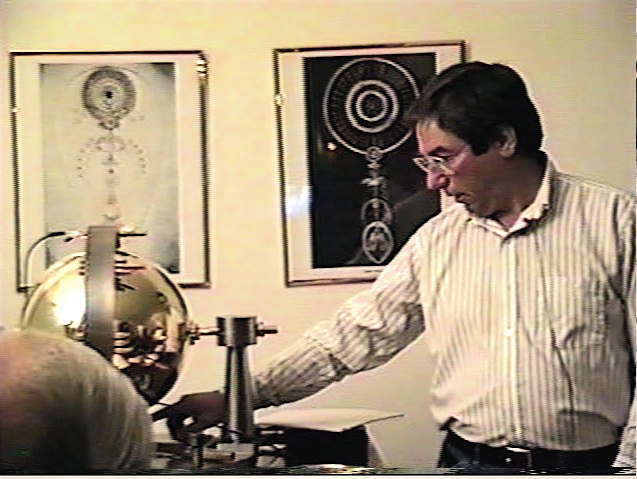 |
| In court? Need assistance? Jurisdictionary |
 |
| Your Own Credit Repair Business |
|
Topic: John Keely's
Laws of Harmony Section: Law of Heat Table of Contents to this Topic |
|
"Atoms under the tension of chemical combination oscillate with an amplitude directly as the temperature, inversely as the pressure, and as the square of the specific heat. Diminishing the pitch of oscillation inversely as the square of the distance of the atoms apart, and simultaneously increasing the vibrating pitch of the atom by absorption of overtones and higher harmonics." Commentary August, 1988 Heat is a fascinating subject. Fascinating because the modern theory is quite different from the one Keely had in mind. His perspective was developed from and with the continual work in vibratory phenomena. The modern theory is developed from the concepts of gross materialism employed up to this day. The notable exception is the work being done by quantum physicists who are rapidly developing a philosophy emerged in vibrations. While it is sometimes difficult to mentally view atoms or molecules not as hard particles but as "vibrating bundles of energy" this is how sympathetic vibratory physics views them and not as hard billiard ball-like mini-spheres. When considered as such it becomes impossible to consider that they actually come in contact with one another thus causing friction which in turn is the alleged source of heat. A key to understanding Keely's meaning may be found in his definition of oscillation and vibration. "Oscillation is a rhythmically recurring translatory movement." (Keely) Oscillation: "Any effect that varies periodically back and forth between two values." (McGraw-Hill Dictionary of Scientific and Technical Terms) "Vibration is the rhythmical motion of a body within itself." (Keely) Vibration: "A continuing periodic change in a displacement with respect to a fixed reference." (McGraw-Hill Dictionary of Scientific and Technical Terms) We see that the modern terminology has very little distinction between what is considered as a vibration and an oscillation. Whereas Keely makes a definite distinction between the two types of motion. The pitch of oscillation refers to the relative oscillation rates of the individual atoms. Each atom is vibrating at a certain and definite rate and each atom is oscillating at a given rate. The atom vibrates within itself and at the same time is oscillating back and forth. A following article describes some of the different modes of vibration and will cast some light on this subject. This back and forth oscillation also diminishes inversely as the square of the distance the atoms are apart referring to the Square Law as it applies to propagating wave energies. The latter part of this law gives us an insight into superconductivity. If the vibratory forces acting within the aggregate under study are all of a harmonious nature, heat will not be developed. According to Keely, it is the absorption of overtones and harmonics into the vibrating atom as it separates from the other atoms. This follows along with the idea that harmony of pitch causes aggregation and discord of pitch causes repulsion or separation. |
| See Also: |
 |
